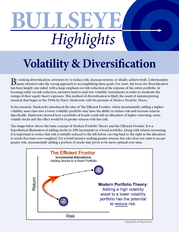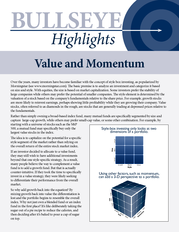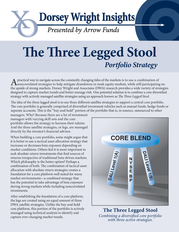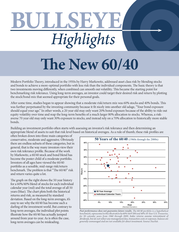Description
Perhaps in a case of history repeating itself, similar results are seen with the more recent financial crisis of 2008.
The image below shows the asset flows of net purchases and redemptions from mutual funds from 2008 through
2010. In the first calendar, the S&P 500 was down -37.0% as assets flowed out of mutual funds for three of the four
quarters of 2008. However, fear-based selling continued as asset flows were net-negative for seven of eight quarters
over two years, despite strong recovery period returns of 26.5% in 2009 and 15.0% in 2010. Had investors simply
held their ground, the net result would have been a far-less-dramatic loss of -2.86% annualized for the period (and
turned positive by early 2011).
Largest Monthly Outflows for 20 Years
Based on Net Monthly Sales Through Dec.
2011 -4000 Aug 2000 Nov 2008 Feb 2000 Jan 2000 Mar 2000 Sep 2008 Aug 2001 -3000 Oct 2008 -2000 Jul 2002 -1000 Nov 1999 0 Flexible Fund Asset Flows (AUM $ millions) When the stock market rallies, investors often pour money into mutual funds, including flexible funds. Despite the fact that flexible funds aren’t always pure stock funds, investors still seem surprised when they underperform during a bull market. And when the stock market declines, investors sell out of flexible funds and miss the periods of time when these funds are truly meant to help.
As assets flow out of flexible funds, the performance in the following 12-months illustrates how investors time the funds incorrectly. After the largest outflow months, on average, flexible funds were up 1.53% when the S&P 500 was down -3.84%. -5000 What was the performance after the largest Average 12-Month Performance This backwards approach flies in the face of two outflows? In the 12-months following the outflows, key elements of flexible investment strategies— After Largest Outflows: on average, Flexible Funds were up +1.53%, participate in the upside of the markets, to a whereas the S&PFunds +1.53% Flexible 500 was down -3.84%. degree, but also help out during down markets through diversification and tactical portfolio changes. By trying to time funds that are already tactical in nature, S&P 500 -3.84% investors failed to achieve either of the two elements.
They pile on during times when it is understandable for these funds to underperform, and they jump ship right when these funds are needed the most. Avoiding the temptation of greed and fear requires discipline, which involves being ever-mindful of risk tolerance, time horizons and sticking to personal investment objectives regardless of short-term market swings. Using a systematic purchasing strategy, like dollar cost averaging or buying on drawdowns, has proven to be a far more disciplined method than trying to time the markets—especially when investing in actively managed, tactical portfolios that are already designed to adapt to the markets. To see the negative effect of failed market timing, check the published investor returns of any given fund.
By re-cooking the cooking, investors get burned and are left with a bad taste in their mouths. Past performance is not indicative of future returns. Historical data is used for statistical illustration purposes only and should not be used as a predictive measure for the future return expectations. The information is subject to change (based on market fluctuation and other conditions) and should not be construed as a recommendation of any specific security or investment product, and was prepared without regard for specific circumstances and objectives of any individual investor.
All investments, including flexible and tactical strategies, involve risk and the potential for loss of principal. Flexible and tactical strategies may involve additional risks, including, but not limited to, shorting risks, the use of leverage, the use of derivatives, futures market speculation and regulatory changes. Before investing in any financial product, always read the prospectus for product-specific risks. The Lipper Flexible Funds Category had 42 funds in 1992 and 220 funds in 2011.
Category changes can skew performance results and potentially create a survivorship bias (where newer funds can alter the long-term perspective,and underperforming funds may close, and therefore, be removed from the data set). For more information about Lipper and Lipper Categories, please visit www.lipperweb.com (©Thompson Reuters). The material herein has been provided by Arrow Investment Advisors and is for informational purposes only. Arrow Investment Advisors serves as investment advisor to one or more mutual funds distributed through Northern Lights Distributors, LLC (member FINRA).
Northern Lights Distributors, LLC and Arrow Investment Advisors are not affiliated entities. 0783-NLD-5/22/2012 .
2011 -4000 Aug 2000 Nov 2008 Feb 2000 Jan 2000 Mar 2000 Sep 2008 Aug 2001 -3000 Oct 2008 -2000 Jul 2002 -1000 Nov 1999 0 Flexible Fund Asset Flows (AUM $ millions) When the stock market rallies, investors often pour money into mutual funds, including flexible funds. Despite the fact that flexible funds aren’t always pure stock funds, investors still seem surprised when they underperform during a bull market. And when the stock market declines, investors sell out of flexible funds and miss the periods of time when these funds are truly meant to help.
As assets flow out of flexible funds, the performance in the following 12-months illustrates how investors time the funds incorrectly. After the largest outflow months, on average, flexible funds were up 1.53% when the S&P 500 was down -3.84%. -5000 What was the performance after the largest Average 12-Month Performance This backwards approach flies in the face of two outflows? In the 12-months following the outflows, key elements of flexible investment strategies— After Largest Outflows: on average, Flexible Funds were up +1.53%, participate in the upside of the markets, to a whereas the S&PFunds +1.53% Flexible 500 was down -3.84%. degree, but also help out during down markets through diversification and tactical portfolio changes. By trying to time funds that are already tactical in nature, S&P 500 -3.84% investors failed to achieve either of the two elements.
They pile on during times when it is understandable for these funds to underperform, and they jump ship right when these funds are needed the most. Avoiding the temptation of greed and fear requires discipline, which involves being ever-mindful of risk tolerance, time horizons and sticking to personal investment objectives regardless of short-term market swings. Using a systematic purchasing strategy, like dollar cost averaging or buying on drawdowns, has proven to be a far more disciplined method than trying to time the markets—especially when investing in actively managed, tactical portfolios that are already designed to adapt to the markets. To see the negative effect of failed market timing, check the published investor returns of any given fund.
By re-cooking the cooking, investors get burned and are left with a bad taste in their mouths. Past performance is not indicative of future returns. Historical data is used for statistical illustration purposes only and should not be used as a predictive measure for the future return expectations. The information is subject to change (based on market fluctuation and other conditions) and should not be construed as a recommendation of any specific security or investment product, and was prepared without regard for specific circumstances and objectives of any individual investor.
All investments, including flexible and tactical strategies, involve risk and the potential for loss of principal. Flexible and tactical strategies may involve additional risks, including, but not limited to, shorting risks, the use of leverage, the use of derivatives, futures market speculation and regulatory changes. Before investing in any financial product, always read the prospectus for product-specific risks. The Lipper Flexible Funds Category had 42 funds in 1992 and 220 funds in 2011.
Category changes can skew performance results and potentially create a survivorship bias (where newer funds can alter the long-term perspective,and underperforming funds may close, and therefore, be removed from the data set). For more information about Lipper and Lipper Categories, please visit www.lipperweb.com (©Thompson Reuters). The material herein has been provided by Arrow Investment Advisors and is for informational purposes only. Arrow Investment Advisors serves as investment advisor to one or more mutual funds distributed through Northern Lights Distributors, LLC (member FINRA).
Northern Lights Distributors, LLC and Arrow Investment Advisors are not affiliated entities. 0783-NLD-5/22/2012 .













